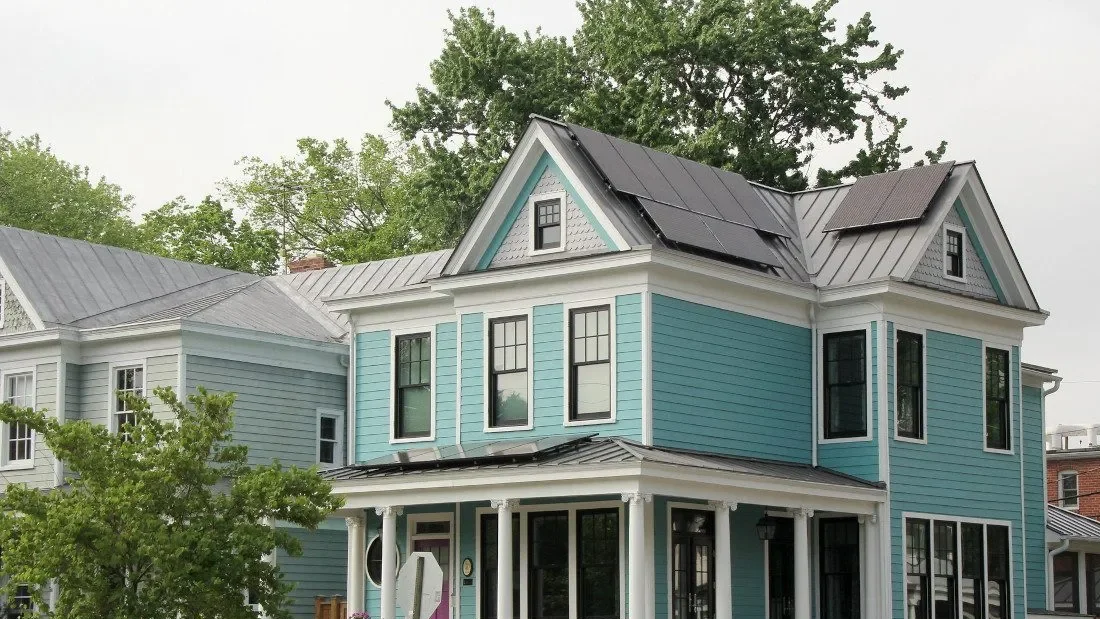
CLEAN ENERGY: Virginia lawmakers consider legislation to make way for more clean energy produced by customers and third-party wind and solar to increase market competition and lower rates as the state aims to meet clean energy goals. (Energy News Network)
ALSO: Georgia Gov. Brian Kemp tells leaders at the World Economic Forum that his state needs more clean energy to attract economic projects such as the electric vehicle and battery factories that have settled there. (Associated Press)
CLIMATE:
ELECTRIC VEHICLES:
OIL & GAS:
GRID: Experts say Texas’ renewable-energy building spree has strengthened the state power grid so that it’s better prepared to handle extreme winter weather. (Washington Post)
PIPELINES: Mountain Valley Pipeline developers adjust plans for its proposed Southgate spur into North Carolina, shortening the extension by more than half but widening its diameter and capacity. (Inside Climate News)
COAL:
HYDROGEN: Federal officials award a $70 million grant to build hydrogen fueling stations at Texas truck stops. (Texas Standard)
OVERSIGHT: Georgia regulators seem skeptical of Georgia Power’s request to buy more energy and build new batteries and gas turbines to meet the news of a surging state economy they say has produced 40 years’ worth of growth in just two years. (WABE)
COMMENTARY:

OIL & GAS: California Gov. Gavin Newsom proposes ending some longstanding tax breaks for oil and gas producers, saying it would save the state up to $22 million annually. (Politico)
ALSO:
SOLAR:
WIND: Washington state regulators are slated next week to consider a proposed 600-1,100 MW wind power facility in the southern part of the state. (Center Square)
STORAGE: A company breaks ground on a 312-battery energy storage system in Phoenix, Arizona. (Arizona Republic)
OVERSIGHT: A Utah lawmaker introduces legislation aimed at allowing the state not to comply with federal regulations it doesn’t like, giving the U.S. EPA’s ozone transport rule as an example. (Utah News Dispatch)
NUCLEAR: A Washington state lawmaker introduces legislation that would provide tax incentives for nuclear power equipment manufacturers. (Center Square)
UTILITIES: Colorado natural gas utilities plan to rely on energy efficiency, demand response and biofuels to achieve state-mandated greenhouse gas emissions reductions. (S&P Global)
HYDROPOWER: U.S. Rep. Dan Newhouse, a Washington state Republican, looks to use a federal infrastructure bill to block a proposal to breach four Northwest hydropower dams. (Idaho Statesman)
ELECTRIC VEHICLES:
TRANSITION: An activated carbon air and water purification manufacturer establishes a facility in northwest New Mexico as part of an effort to diversify the region’s fossil fuel-reliant economy. (Daily Times)
ELECTRIFICATION: Palo Alto, California, stops enforcing a ban on natural gas hookups in new construction following a court order axing Berkeley’s similar rule. (Daily Post)
COAL: Montana utility observers ask why the Colstrip coal plant remained offline during a recent cold snap even as utilities had to import power to keep the lights on. (Missoula Current)
GRID: Another severe winter storm pounds utility equipment in the Northwest, leaving more than 40,000 customers without power in Portland, Oregon. (KGW)
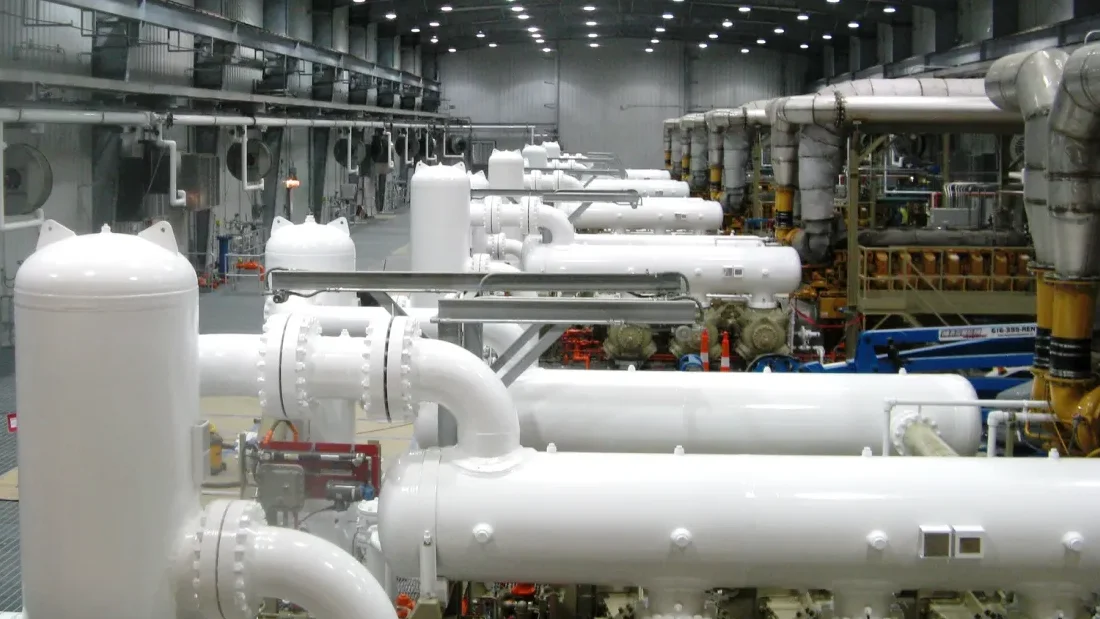
GAS: In Maine, a proposal to curtail future gas line expansions has drawn criticism from Republican lawmakers, gas utilities and trade groups over consumer affordability and investment concerns. (Portland Press Herald)
ALSO: New York lawmakers want to end a law that requires utilities to connect new homes, businesses and industrial facilities to gas lines if they’re within 100 feet of an existing line. (Newsday)
BUILDINGS: In New York City, the final rules for building emission reduction policies at the state and local level continue to allow for wood-burning fireplaces and stoves, despite their emissions intensity. (Gothamist)
GRID: Grid tech startup NineDot Energy has raised $225 million in equity capital to develop community-scale battery storage projects in small, difficult to develop spaces in New York City. (Canary Media)
CLEAN ENERGY: A year after his swearing-in, Pennsylvania’s governor has yet to announce how the state will achieve his campaign goal of having 30% of all energy sales stem from renewable sources by 2030. (Capital & Main)
REGULATION:
NUCLEAR: The developers of a proposed data center want to build on the same site as the Millstone nuclear power plant in Connecticut and use electricity from it, but some critics have environmental, safety and flooding concerns. (CT Mirror)
ELECTRIC VEHICLES: A University of Delaware research team is working on new standards to help vehicle manufacturers adopt Tesla’s charging standard and make it easier to integrate vehicle-to-grid technologies. (Delaware News Journal)
SOLAR:
CLIMATE:
OFFSHORE WIND:

GRID: Texas’ power grid broke records for winter demand but withstood last week’s polar vortex, while a largely partisan debate continues over whether added renewables or natural gas facilities deserve more credit for avoiding outages. (Utility Dive, Inside Climate News)
ALSO:
POLITICS:
PIPELINES:
LITHIUM: ExxonMobil and other oil majors are beginning to return to Arkansas and other rural areas with fossil fuel histories in pursuit of lithium to supply the clean energy transition. (Grist)
SOLAR:
ELECTRIC VEHICLES: Electric vehicle owners in Virginia line up to charge their cars out of worry a cold snap could sap their batteries. (WRIC)
UTILITIES: Kentucky isn’t among the states that restrict electric utility shutoffs during freezing weather, but customers do have avenues to obtain a hardship reconnection or set up payment plans. (Lexington Herald-Leader)
COMMENTARY:
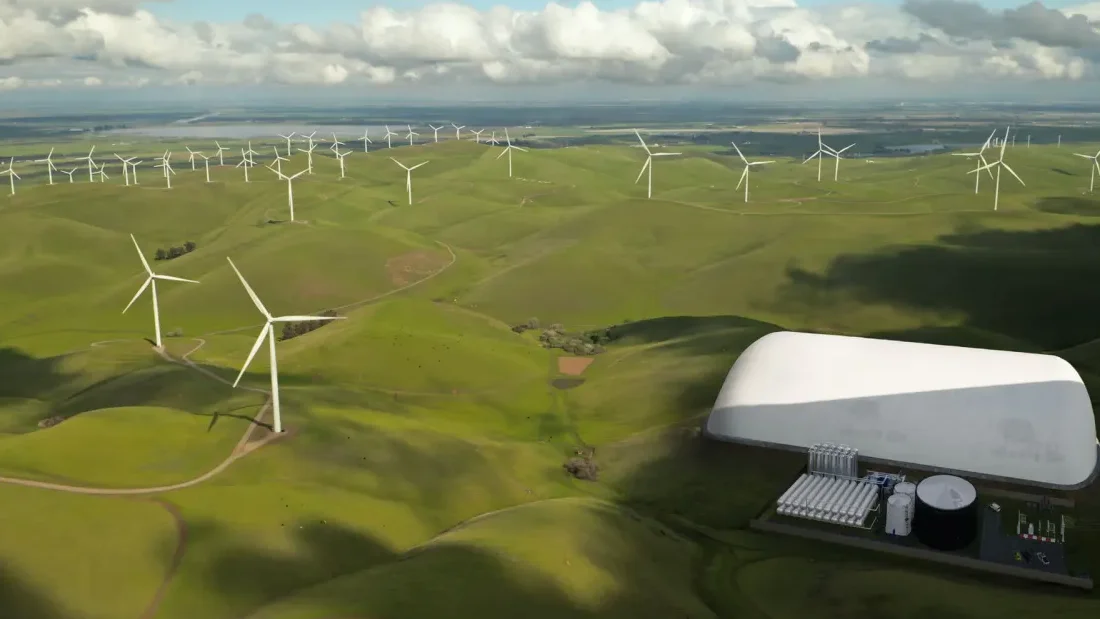
UTILITIES: Xcel Energy wants time-of-use rates to be the default billing system for its Minnesota residential customers, proposing to double prices for power during peak late afternoon and early evening hours. (Energy News Network)
WIND:
GRID:
PIPELINES:
RENEWABLES: A Michigan panel allows organizers to start collecting signatures for a ballot initiative seeking to overturn a state law giving state regulators authority over renewable energy permitting. (Bridge)
ELECTRIC VEHICLES:
NUCLEAR: The South Dakota House passes a bill to clarify that the governor can enter into federal agreements on nuclear power development in preparation for a new potential plant. (SDBA)
CLEAN ENERGY: A Michigan lawmaker says the timing of the federal Inflation Reduction Act was a significant reason why the state passed sweeping clean energy reforms last year. (Volts)
STORAGE:

Newly empowered Virginia Democrats are pushing legislation this session that would elevate the role of customers and private developers in meeting the state’s clean energy targets.
A chief aim of the ARC bill — shorthand for Affordable, Reliable and Competitive — is to significantly expand the amount of power generated by less expensive, third-party solar and onshore wind projects in the service territories of both Dominion Power and Appalachian Power.
After legislators green-lighted the bold Virginia Clean Economy Act (VCEA) in 2020, regulators capped those types of projects at 35% of an investor-owned utility’s renewable energy portfolio.
Backers of the ARC legislation, House Bill 638 and Senate Bill 230, are calling for that 35% to act as a floor rather than a ceiling.
“We know the market can support at least 35%,” said Nate Benforado, senior attorney with the Southern Environmental Law Center. “We’re not saying the new target should be 100%. Whatever the number is, it’s best left to the discretion of the State Corporation Commission.”
Benforado’s organization collaborated with policy specialists at organizations including Advanced Energy United and the Sierra Club to shape the ARC legislation. They expect the proposal — with its emphasis on increasing market competition and lowering costs — will attract Republican supporters on its way through the General Assembly.
“This is one of those issues that is bipartisan,” he said about adjusting the existing statutory framework to escalate growth of renewables.
Briefly, the VCEA requires Dominion to incrementally meet a goal of 100% clean energy generation by 2045. Targets for 2025 and 2035 are 26% and 59%, respectively. Appalachian Power is supposed to follow suit by 2050.
Del. Rip Sullivan, a Fairfax County Democrat, is the patron of HB 638, while Sen. Ghazala Hashmi, a Democrat representing the Richmond region, is sponsoring the upper chamber version.
Just days after the legislative session convened on Jan. 10, Sullivan told attendees at a Virginia Grassroots Coalition online gathering that he was reluctant to attempt to tweak the VCEA until Democrats again regained majorities in both chambers.
That happened during the November election when Democrats held on to a slim majority in the Senate and flipped the House back to their control. Still, narrow vote margins mean they don’t have the supermajorities necessary to override vetoes or enact new laws that Republican Gov. Glenn Youngkin opposes.
Sullivan’s bill would also require the two large utilities to allow a fivefold increase in the percentage of distributed energy generated by small-scale solar and solar storage projects.
Solar installers are on the verge of exceeding the 1% renewable portfolio limit included in the VCEA because of customer demand for closer-to-home energy.
Bumping that upward to 5% is an incentive to let Virginia unlock the lowest-cost path to clean energy because it veers away from a utility-only approach, said Robin Dutta, acting executive director of the Chesapeake Solar & Storage Association.
His organization represents renewable energy developers in Virginia, Maryland, Delaware and the District of Columbia.
“There’s a huge climate argument for distributed generation,” Dutta said. “By lowering peak (energy) demand as much as possible, utilities don’t have to build out the grid with transmission lines and other infrastructure.”
The legislation would allow local, small-scale projects — which include rooftop solar, community solar and related storage — to be as large as 3 megawatts. That triples the current 1 MW cap.
Inviting the private sector to play a larger role not only drives technical innovation, but also lets non-utility entities and regular ratepayers be armed with their own power generation, Dutta said.
He praised Sullivan’s bill for folding in a pair of renewable stalwarts — third-party-owned solar projects and distributed energy — that green the grid and protect affordability for ratepayers.
“Those two pieces move the ball forward in two different ways,” Dutta said. “And that leads to a more equitable clean energy transition for ratepayers.”
One advantage of distributed generation is that solar panels aren’t covering acres of farmland, Benforado said. Instead, projects are sited near the people using the renewable energy, which avoids costly transmission and distribution upgrades.
Despite industry enthusiasm, Dominion Energy has a “number of concerns with the legislation” and is “working with the sponsor to hopefully address some of them,” utility spokesman Aaron Ruby told the Energy News Network.
The utility’s most pressing issue revolves around raising the distributed solar carve-out. Dominion claims that boosting it to 5% would require the utility to buy renewable energy credits from roughly 3,700 megawatts of distributed solar projects by 2048.
That is “completely unrealistic,” Ruby said, adding that adhering to the increase would cost Dominion about $260 million in penalties annually for being out of compliance with the incremental renewable energy goals laid out in the VCEA.
Ruby explained that Dominion has lowered customer electricity rates significantly and is more than a year ahead of schedule on meeting its renewable energy requirements.
“This legislation heads in the opposite direction on both scores,” he said. “You’ve heard the old saying, ‘If it ain’t broke, don’t fix it.’ I’d go even further. If it’s working, don’t break it.”
Third-party solar developers in Virginia — and elsewhere — usually engage in a mutually beneficial arrangement known as a power purchase agreement, or PPA for short, to help customers meet sustainability goals.
Generally, those deals allow the builder to install, own and operate the energy system on land the customer owns. The customer receives stable, often low-cost electricity with no upfront cost for a predetermined length of time, which enables the owner to take advantage of tax credits and earn income from the sale of electricity.
Environmental advocates maintain that solar projects built, operated and maintained by third parties are less expensive than those coordinated by utilities. For one, utilities receive a return on equity for capital expenditures and project costs are then passed on to ratepayers.
However, third-party builders are not only competing for business but investing their own capital, which means they assume all financial risks. That alone is incentive enough to deliver a successful project at a reasonable cost.
“With the Clean Economy Act, we have a path and a structure to improve the affordability of this transition to clean energy,” the SELC’s Benforado said. “We don’t want to see lower-cost options for customers dismissed because of a 35 percent cap.”
He pointed to testimony presented last January to utility regulators by Gregory Abbott on behalf of Appalachian Voices, an environmental nonprofit. Abbott, who had recently retired from the SCC after 24 years in the commission’s Division of Public Utility Regulation, was commenting on a case involving Dominion’s renewable energy portfolio.
Abbott stated that third-party-owned solar projects are a more affordable and “attractive option for captive customers” because of lower risks associated with performance and project development
Abbott also noted that Dominion has consistently left lower-cost, third-party solar projects out of its renewable energy mix because of its interpretation of 35% as an exact number instead of a suggestion.
On the Senate side, the bill has been referred to the full Labor and Commerce Committee. Over in the House, it was in front of a Labor and Commerce subcommittee as of Jan. 16.
“Virginia’s curve is headed up when it comes to renewables and clean energy,” said Sullivan, the House sponsor. “Despite what you may be hearing from some quarters, we can and should be on track to meet our goals. Having said that, we need to do better, we need to do it faster and we need to do more.”
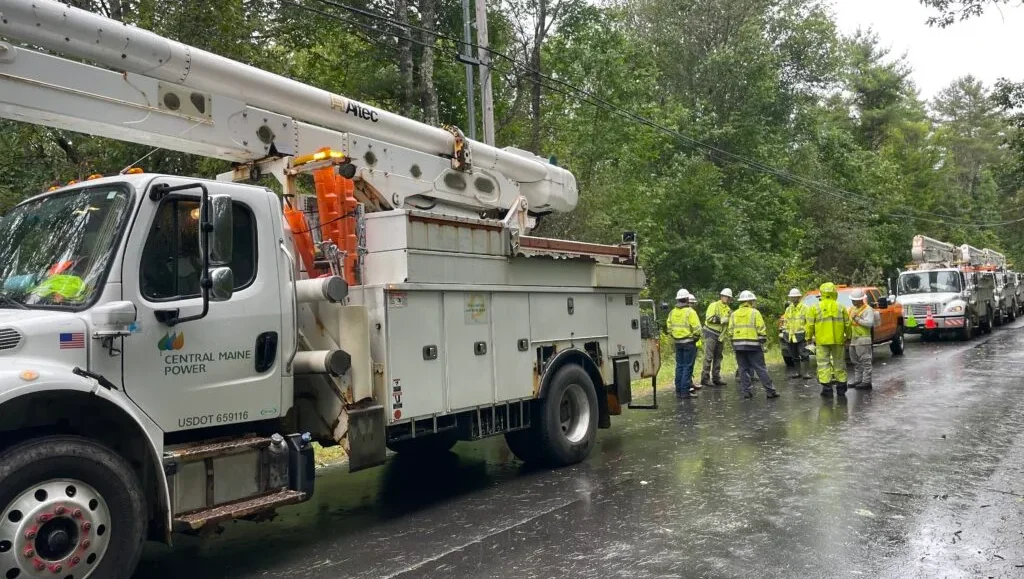
UTILITIES: Following the defeat of a ballot measure to replace Maine’s investor-owned utilities with a consumer-owned power company, policymakers and advocates explore new ways to improve service. (Maine Morning Star)
POLICY:
WIND:
GRID: Utility crews mobilize and New Jersey’s governor declares a state of emergency ahead of a “powerhouse” rain and wind storm expected to sweep the Northeast tonight. (WHAM, NBC 5, NorthJersey.com)
ELECTRIC VEHICLES: Massachusetts and Connecticut are set to receive enough federal funds to respectively purchase 85 and 50 electric school buses apiece. (Worcester Telegram & Gazette, CT Mirror)
SOLAR: In Northfield, Massachusetts, an almost 11 MW solar project makes installation progress as it resumes development following the end of an appeal of the local planning board’s decision. (Daily Hampshire Gazette)
NUCLEAR: New Hampshire and Massachusetts legislators request a public forum as they question a proposed consolidation of NextEra’s emergency management plan at the Seabrook plant and other nuclear stations it operates. (In-Depth NH, New Hampshire Bulletin)
BUILDINGS: A new social media campaign launched by New York City teenagers encourages the mayor’s office to accelerate school building retrofits. (Gothamist)
CLIMATE:

CLIMATE: The U.S. Supreme Court denies six fossil fuel companies’ request to move the Minnesota attorney general’s climate lawsuit to federal court, keeping the case at the state level. (Star Tribune)
CLEAN ENERGY:
POLITICS: The former Ohio Republican Party chairman wants to have his conviction in the state’s largest bribery scandal thrown out, saying government officials abused their charging and prosecuting power. (Cincinnati Enquirer)
PIPELINES: About 200 landowners gather in South Dakota’s capital to call on lawmakers to pass bills preventing the use of eminent domain for carbon pipelines and allowing counties to set local siting restrictions. (South Dakota Searchlight)
GRID: Indiana utility NIPSCO and a chemical company will pay $66.7 million to settle charges related to manipulating grid operator MISO’s demand response program. (Utility Dive)
SOLAR:
POWER PLANTS:
OIL & GAS: Longtime scientist and advocate Sandra Steingraber says researchers have an obligation to speak on hydraulic fracking’s links to environmental health problems, and likens well sites as “these sort of giant cigarettes in the earth.” (Inside Climate News)
STORAGE: A subsidiary of LG Energy Solution plans to build 10 grid-scale battery storage projects in the U.S. this year following the passage of the Inflation Reduction Act. (Utility Dive)
HYDROGEN: Industry groups say the Biden administration’s proposed rules for a hydrogen production tax credit would kneecap the nascent industry while environmental groups say they are needed to keep emissions in check. (States Newsroom)

SOLAR: Hawaii advocates say lower payments for customers’ excess rooftop solar could incentivize customers to only install arrays for their own use and avoid exporting to the grid, imperiling the state’s energy transition. (Hawaii Public Radio)
WIND: A nonprofit seeks additional historic protections for a World War II Japanese incarceration camp in Idaho, with a goal of halting the proposed Lava Ridge Wind Project. (Boise State Public Radio)
CLEAN ENERGY: Alaska lawmakers are set to consider bills related to community solar, sustainable energy loans and clean energy standards for utilities this legislative session. (Alaska Public Media)
OIL & GAS:
COAL: Wyoming considers partnering with a mining company to explore using coal in asphalt. (Cowboy State Daily)
ELECTRIFICATION:
NUCLEAR: Oregon small modular nuclear reactor startup NuScale says it laid off 154 workers as part of its shift from its research phase to commercialization of its technology. (Oregonian)
ELECTRIC VEHICLES:
GRID:
CRITICAL MATERIALS: The U.S. Supreme Court rejects Alaska’s bid to review the U.S. EPA’s denial of the proposed Pebble copper and gold mine, dealing a blow to the state’s efforts to revive the project. (E&E News)
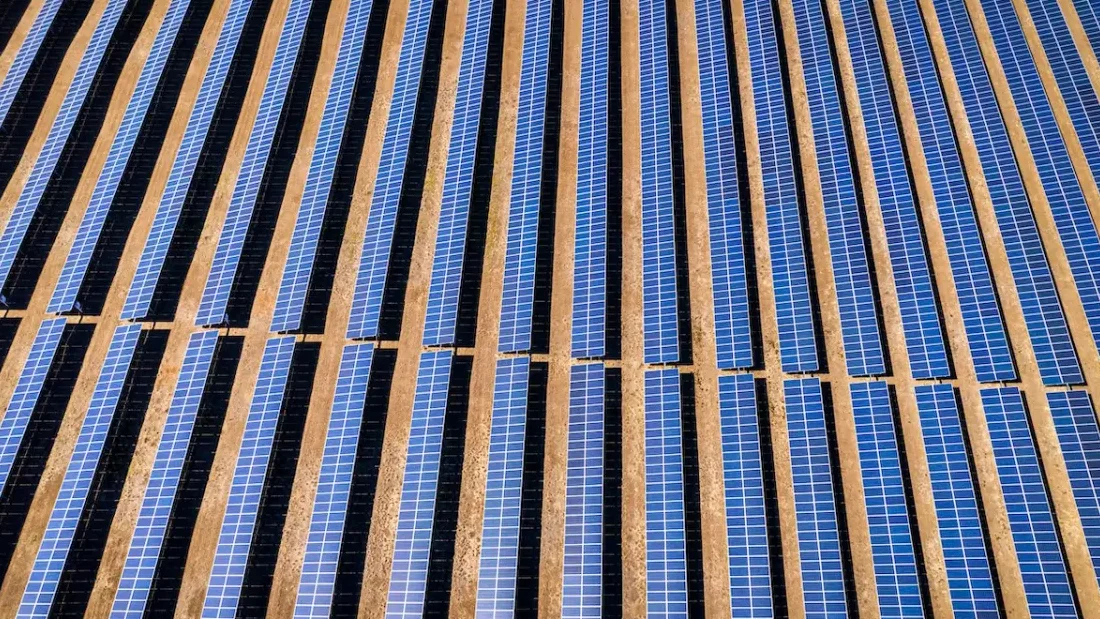
STORAGE: Developers bring a 185 MW battery energy storage installation online in Hawaii to replace the capacity and grid services formerly provided by a shuttered coal plant. (Canary Media)
ALSO:
SOLAR:
WIND: Developers break ground on the SunZia wind project in New Mexico, set to be the biggest wind facility in the Western Hemisphere. (Associated Press)
OIL & GAS:
NATURAL GAS: A New Mexico utility says it needs to build a controversial natural gas storage facility on a city’s outskirts to ensure reliability, but residents worry about safety. (NM Political Report)
CLEAN ENERGY: A Nevada county votes to oppose proposed lithium mining operations near a wildlife refuge and solar developments on federal lands, saying they could strain diminishing water supplies. (Nevada Current)
URANIUM: Wyoming officials say rising commodity prices led to a uranium production uptick last year following a long period of industry near-dormancy. (WyoToday Media)
CLIMATE: Colorado advocates push back on a university’s plan to upgrade heating and power equipment, saying it isn’t enough to slash carbon emissions. (Colorado Newsline)
ELECTRIC VEHICLES:
GRID:
COMMENTARY: A Hawaii lawmaker urges the state to file a lawsuit against the fossil fuel industry to hold it accountable for its contributions to climate change. (Honolulu Civil Beat)